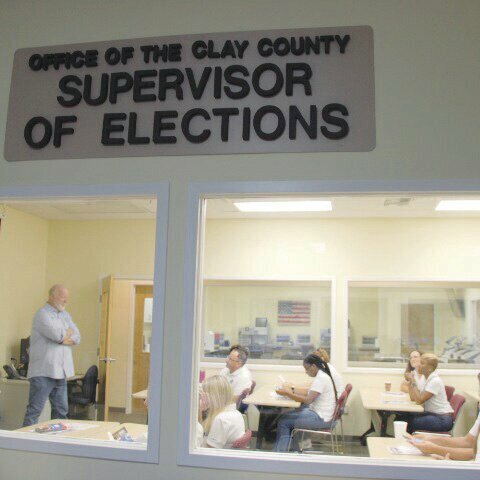Ensuring voting integrity by separating facts from myths
CLAY COUNTY – Can you vote if your address doesn’t match the address on your driver’s license? What if you wear a “Vote for Pedro” T-shirt at the polls? Will you be allowed to enter? Can …
This item is available in full to subscribers.
Attention subscribers
To continue reading, you will need to either log in to your subscriber account, below, or purchase a new subscription.
Please log in to continueDon't have an ID?Print subscribersIf you're a print subscriber, but do not yet have an online account, click here to create one. Non-subscribersClick here to see your options for subscribing. Single day passYou also have the option of purchasing 24 hours of access, for $1.00. Click here to purchase a single day pass. |
Ensuring voting integrity by separating facts from myths
CLAY COUNTY – Can you vote if your address doesn’t match the address on your driver’s license?
What if you wear a “Vote for Pedro” T-shirt at the polls? Will you be allowed to enter?
Can the homeless vote?
It may surprise you, but the answer is yes to all three questions.
Elections seem to stir a lot of misinformation, disinformation and malinformation. Hanging chads, dead people voting, ballot stuffing and manipulated vote counts are some of the common myths during election cycles.
Misinformation is deliberately spreading inaccurate information to deceive intentionally. Disinformation is false propaganda intended to mislead a rival power or media. Malinformation is information based on fact but removed from its original context to deceive, harm or manipulate.
Early voting for the primary election is underway through Aug. 17, followed by the primary election on Aug. 20. Supervisor of Elections Chris Chambless wants to ensure voters can trust the integrity of the process.
Two of the most common pieces of misinformation Chambless hears are dead people voting and election machines being manipulated by outside sources.
Both are false, Chambless said.
“Of course, the first thing we hear is dead people voting,” he said.
The Florida Department of Health provides names from death certificates weekly. Chambless said his office also gets notifications from family members, clerks of courts and Social Security.
“There is a lot of maintenance in 90 days, but we also do it in real-time.”
Counting machines aren’t connected to the internet, so they can’t be hacked.
“Our systems are locked and sealed,” he said. “We have a chain of custody. We have a two-person control. Even if you get into the tab room, where only three people in the organization can access that tab room, you would have to know how to do that.
“Then we have at least three last fail-safes – logic and accuracy tests randomly created in the test deck. If you didn’t know what was being tested, you would not be able to write such a script to be able to do that.”
The best way to distinguish between myths and facts is at clayelections.gov. Under the tab Election Information, visit Get the Facts or call the elections office at (904) 269-6350.
You can also find information about what kind of identification is accepted at the polls, how to register, what happens if a ballot has already been cast in your name, and how to request a vote by mail ballot.
One of the best safeguards is the ballots themselves. They are printed as needed, one at a time at the polls, so there aren't any leftovers that can be maliciously added to the count, Chambless said. That ensures an accurate tally and saves taxpayers money because they aren't paying for extra printing and eventually discarding unneeded ballots.
When the polls open, each poll worker must sign a verification sheet showing each tabulating machine starting with zero votes. When the polls close, each worker has to sign the same verification sheet to prove the number of votes for that tabulation machine matches the number of votes in their computer.
The precinct clerk delivers the locked tabulating machines to the elections office. If there is an attempt to open them, the count reverts to zero. Only a designated election official can open them in a secured room under constant surveillance.
While the state requires selected precincts to verify every ballot and vote, Chambless said Clay County does it with every precinct. If the final tally is off by one vote, there is a recount until the figures are justified.
If you have any doubts, Chambless has a solution: “Don’t take my word for it. You know, come here and invest yourself into the process.”







